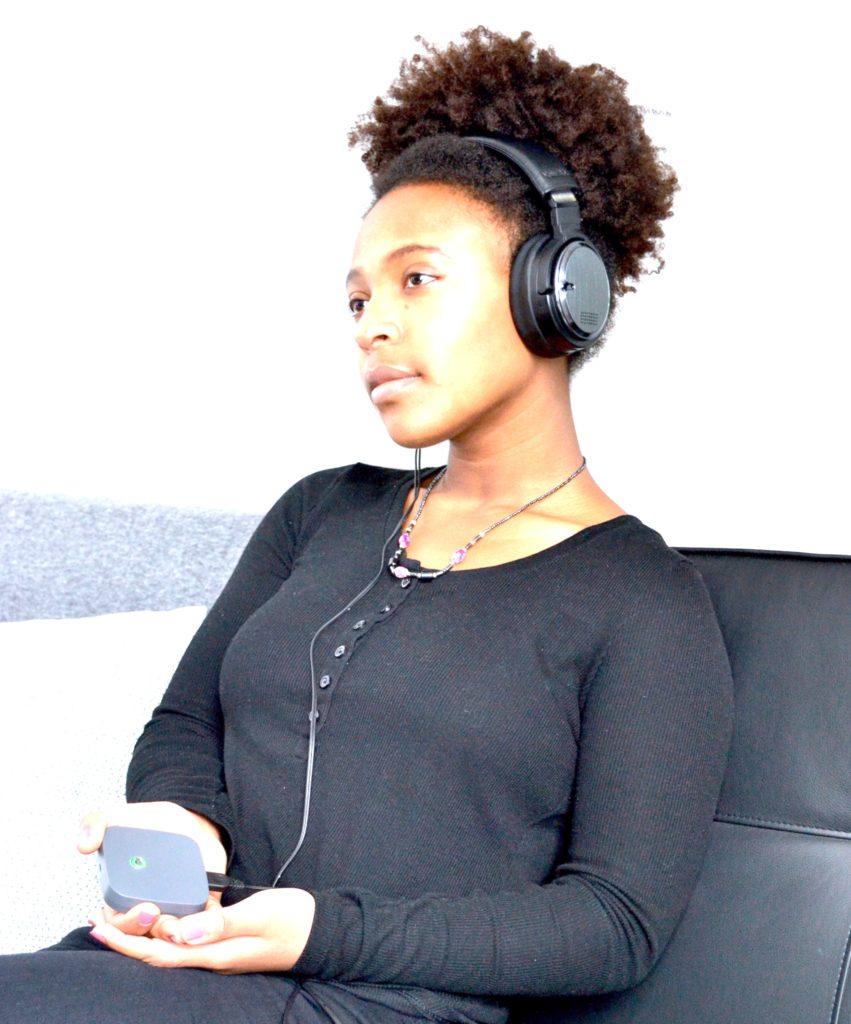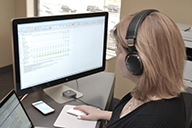Cervella Cranial Electrical Stimulator
Non-Drug Alternative for Treatment of Anxiety, Depression, and Insomnia

What is it?
Cervella is an FDA-cleared award-winning medical device for non-drug treatment of anxiety, depression, and insomnia. Cervella works by delivering micro pulses of electric current through the patient’s brain via conductive electrodes that are integrated into the ear cushions of an audio headset. Cervella is controlled via an app installed on the patient’s smart device. During treatment, which typically lasts 30 minutes, the patient can listen to music via a dedicated Bluetooth connection or use the active noise cancellation feature of the headset. In short, Cervella can be used during work, study, or play.
How does Cervella Work?

Cervella transmits small pulses of electric current across the patient’s brain via a pair of conductive electrodes placed on the patient’s head. CES devices are approved by the FDA for the treatment of insomnia, depression, and anxiety. They exhibit very good efficacy, do not present significant side effects, and they are not habit-forming. According to research, the microcurrent that is delivered by Cervella has several effects on the brain: it affects the Default Mode Network (DMN), alters the endogenous brain oscillations, and causes a change in neurotransmitter levels such as serotonin and endorphin. Cervella is a good alternative to drug therapies, especially for patients that respond poorly to anti-depressant drugs or experience significant side-effects with drug-based therapies. Cervella can also be used in conjunction with the drug or cognitive therapies.
Indications
• Anxiety
• Insomnia
• Depression
Contraindications
• Cardiac Pacemaker
• Defibrillator
• Active Cancer
• Pregnancy
• Metal Implants in Head or Neck
Clinical Research
The following is a partial list of clinical trials and research on the efficacy of Cranial Electrotherapy Stimulation. Note that, as per the FDA requirement, Cervella is substantially equivalent in the underlying principle of operation (current intensity levels, frequencies, treatment duration) to the CES devices cited in the various clinical trials.
- Barclay TH, Barclay RD. A clinical trial of cranial electrotherapy stimulation for anxiety and comorbid depression. Journal of Affective Disorders, 164:171-177, 2014.
- Klawansky S, Yeung A, Berkey C, Shah N, Phan H, Chalmers TC., Department of Health Policy and Management, Harvard School of Public Health, Boston, Massachusetts 02115, USA. Meta-analysis of randomized controlled trials of cranial electrostimulation. Efficacy in treating selected psychological and physiological conditions. J Nerv Ment Dis. 1997 Dec; 185 (12): 766-7
- Bystritsky A, Kerwin L, Feusner J.Department of Psychiatry and Biobehavioral Sciences, University of California, Los Angeles, CA 90095, USA. A Pilot Study of Cranial Electrotherapy Stimulation for Generalized Anxiety Disorder
- Jamie D. Feusner, Sarah Madsen, Teena D. Moody, Cara Bohon, Emily Hembacher, Susan Y. Bookheimer & Alexander Bystritsky. Department of Psychiatry and Biobehavioral Sciences, David Geffen School of Medicine, University of California, Los Angeles, California. Effects of cranial electrotherapy stimulation on resting state brain activity
- DeFelice EA. Cranial electrotherapy stimulation (CES) in the treatment of anxiety and other stress-related disorders: a review of controlled clinical trials. Stress Med. 1997;13:31–42.
